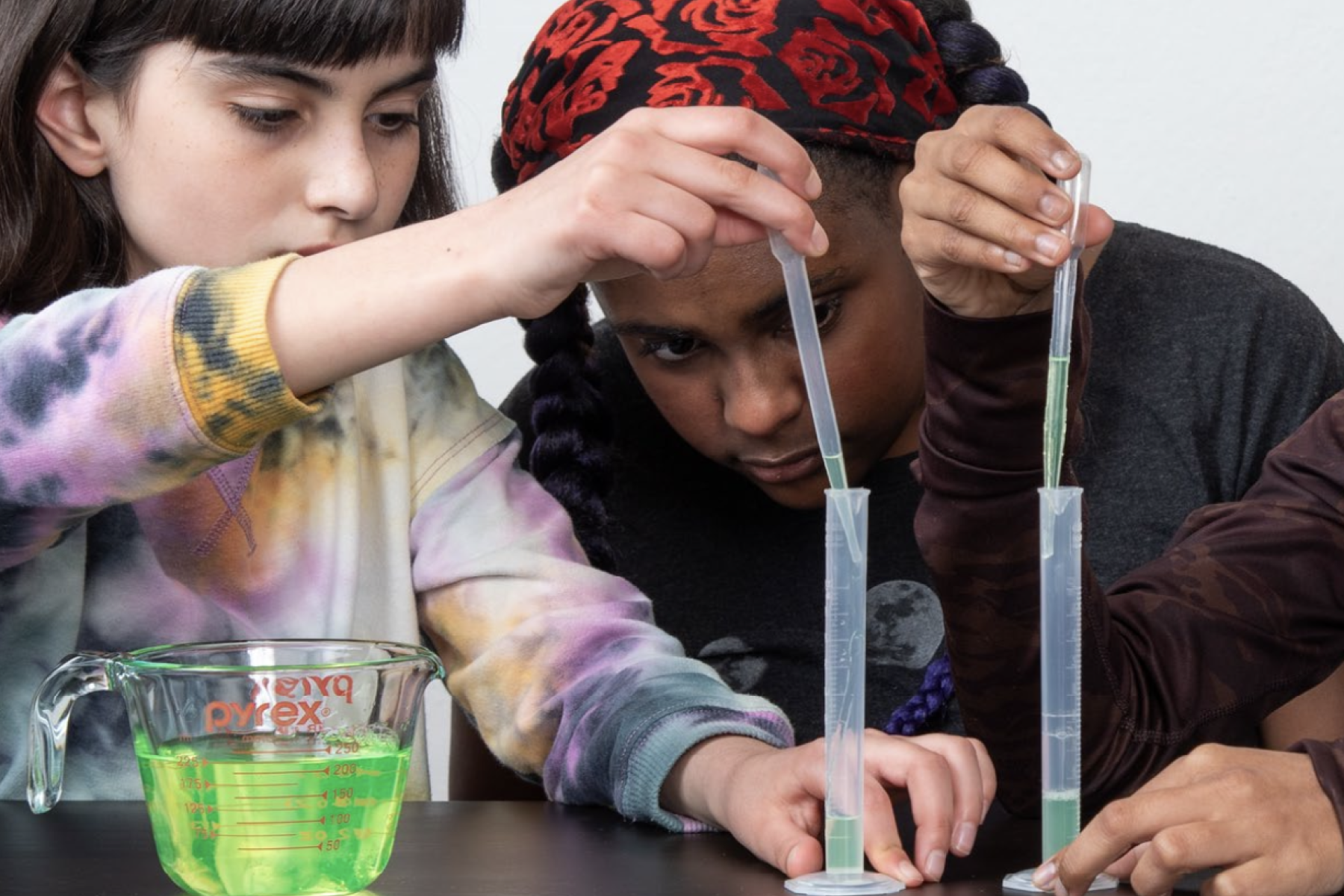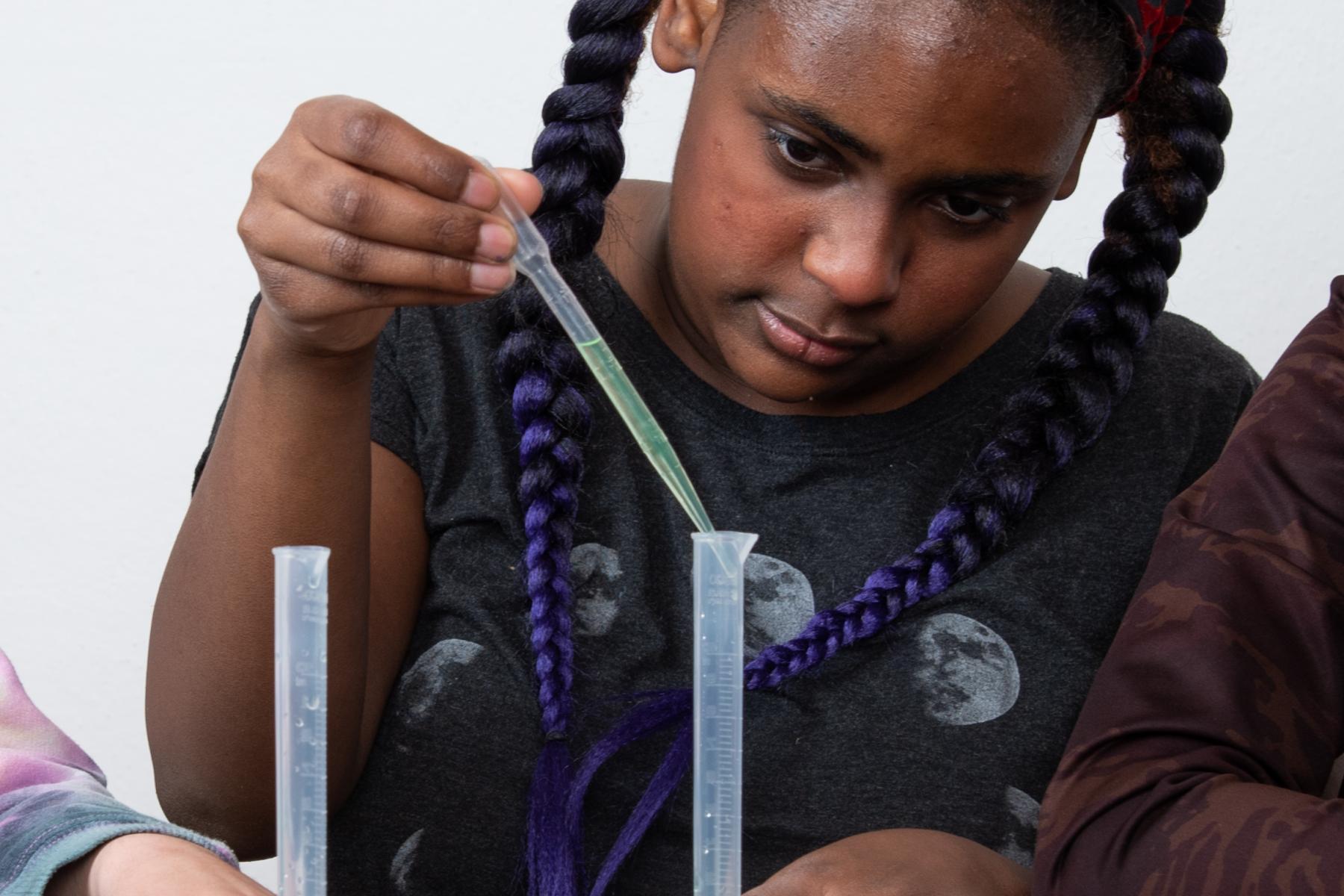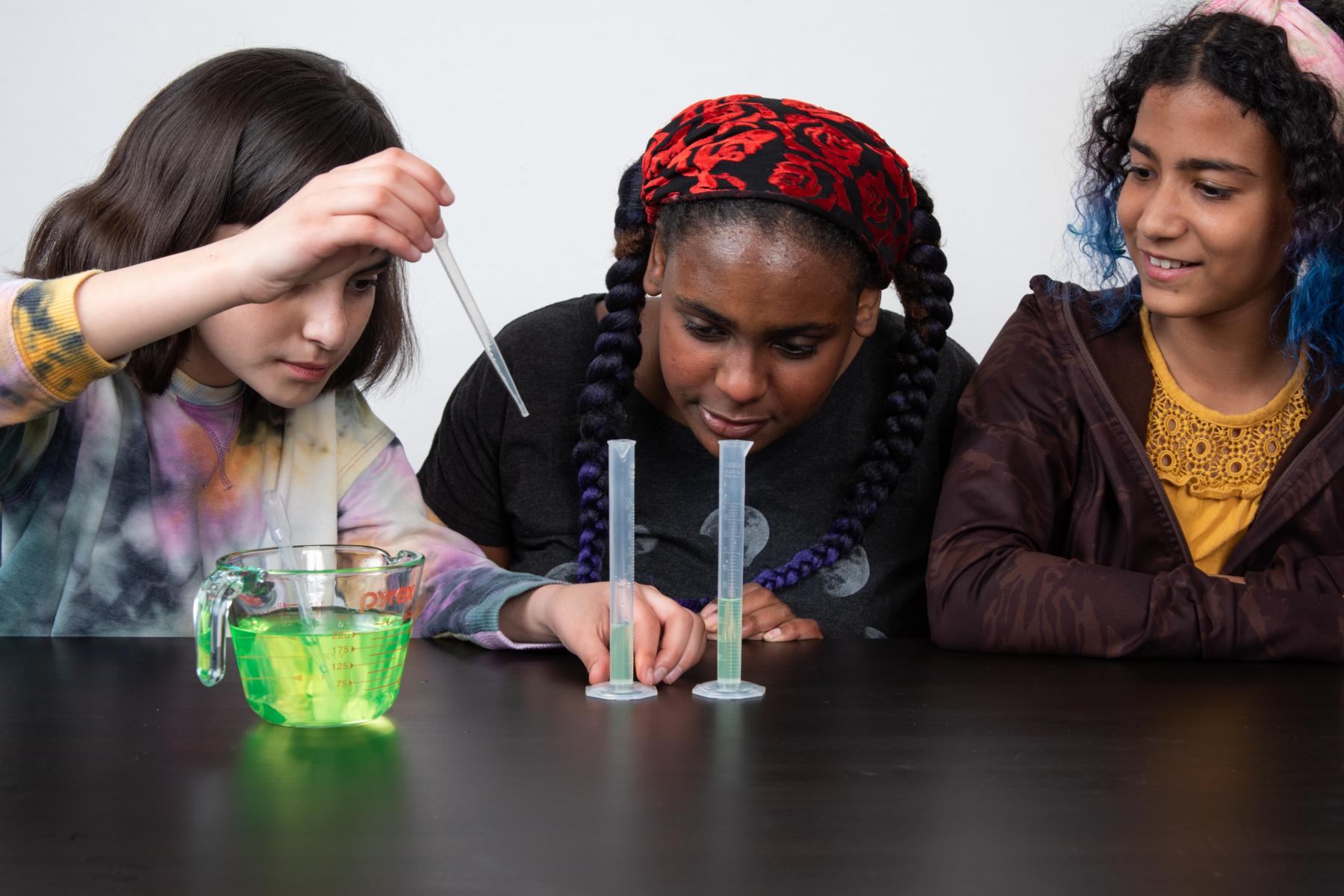DESCRIPTION
In this activity, learners explore the technology and processes that will be necessary in order to create a breathable atmosphere for life on a Moon base, while also talking about the current processes being used on the International Space Station. Learners will do an experiment that demonstrates some of the science concepts involved in this process.
DESCRIPTION
In this activity, learners explore the technology and processes that will be necessary in order to create a breathable atmosphere for life on a Moon base, while also talking about the current processes being used on the International Space Station. Learners will do an experiment that demonstrates some of the science concepts involved in this process.
TRAINING VIDEOS
OBJECTIVES
BIG IDEA
The future of space travel will require a lot of recycling.
LEARNING GOALS
Astronauts use a variety of systems to reuse and recycle as much as they can—even the air must be treated and filtered so they can breathe.
The technology and systems being used on the International Space Station now help prepare us for future missions to the Moon and Mars.
DOWNLOAD FILES
- Explore Science: Voyage through the Solar System Breath of Fresh Air Guide (PDF)
- Explore Science: Voyage through the Solar System Breath of Fresh Air Sign (PDF)
- Explore Science: Voyage through the Solar System Breath of Fresh Air Facilitator Guide (PDF)
- Explore Science: Voyage through the Solar System Breath of Fresh Air Sign Spanish (PDF)
- Explore Science: Voyage through the Solar System Breath of Fresh Air Guide Spanish (PDF)
Credits
This material is based upon work supported by NASA under award number 80NSSC21M0082. Any opinions, findings, and conclusions or recommendations expressed in this material are those of the author(s) and do not necessarily reflect the view of the National Aeronautics and Space Administration (NASA).
Creative Commons Attribution Non-Commercial Share Alike 3.0 United States (CC BY-NC-SA 3.0 US).
View more details

NISE Network products are developed through an iterative collaborative process that includes scientific review, peer review, and visitor evaluation in accordance with an inclusive audiences approach. Products are designed to be easily edited and adapted for different audiences under a Creative Commons Attribution Non-Commercial Share Alike license. To learn more, visit our Development Process page.







